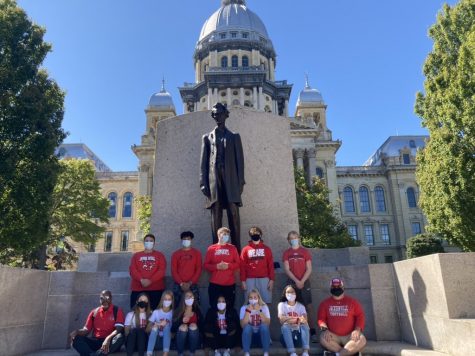Esperanto: A language of basics
January 29, 2016
In 1887, hope for equality took a linguistic form: Esperanto. A constructed language created by Dr. Ludwig Lazarus Zamenhof, Esperanto now has 1,000 native speakers and over a million people have studied the language somewhat. Books, radio broadcasts, and songs can be found in Esperanto, and it is most commonly used in Eastern Europe and Asia.
The history for Esperanto is relatively simple: It was created as in international auxiliary language, or in more simpler terms, a language that was politically neutral and could be used by people from various backgrounds to give them a common ground. It was created by Dr. Zamenhof after he witnessed the tension in multi-ethnic communities which, he thought, derived from the fact that no one could effectively communicate with each other. Zamenhof set out to remedy this by combining languages to form an easy-to-learn alternative; originally called “La Internacia Lingvo,” the International Language, Esperanto was born.
Esperanto has a very simple syntax and most vocabulary is similar to German, English, Russian, Polish, and the romance languages such as Spanish and French. The grammar is easily understood and very logical: all nouns end in an -o, adjectives end in -a, and so on.
Different words can be made by using created roots and adding prefixes and suffixes in order to communicate new thoughts or ideas. The world has undoubtedly changed from the late 1800’s, and Esperanto has changed with it. Just like any language, Esperanto lives in the fact that new words are constantly being added and new phrases created. In some areas of the world, Esperanto is taught in schools; however, many of the people who have learned to speak it taught themselves through self study. The Internet offers many options and creative ways to learn Esperanto. The website and mobile app Duolingo offers Esperanto as one of their free courses and the web page lernu! is a page completely for students of the language offering lessons and forums as well as a dictionary. It is also free of charge.
Meaning “one who hopes,” Esperanto is an interesting if obscure language. It boasts of equality as many people have had to learn it themselves rather than it being their native tongue and its simple grammar makes it easier to understand the inner workings of other languages as well. However, Esperanto is not as widely known in the United States as in other areas of the world. Learning it is not difficult with the amount of Youtube videos and online sites to guide the student through their first taste of the language; although, it does require dedication and learning new additions to the Roman alphabet. While Esperanto is not an official language of any nation, it can undoubtedly be said that Esperantists have a bond of camaraderie in their constructed tongue.






